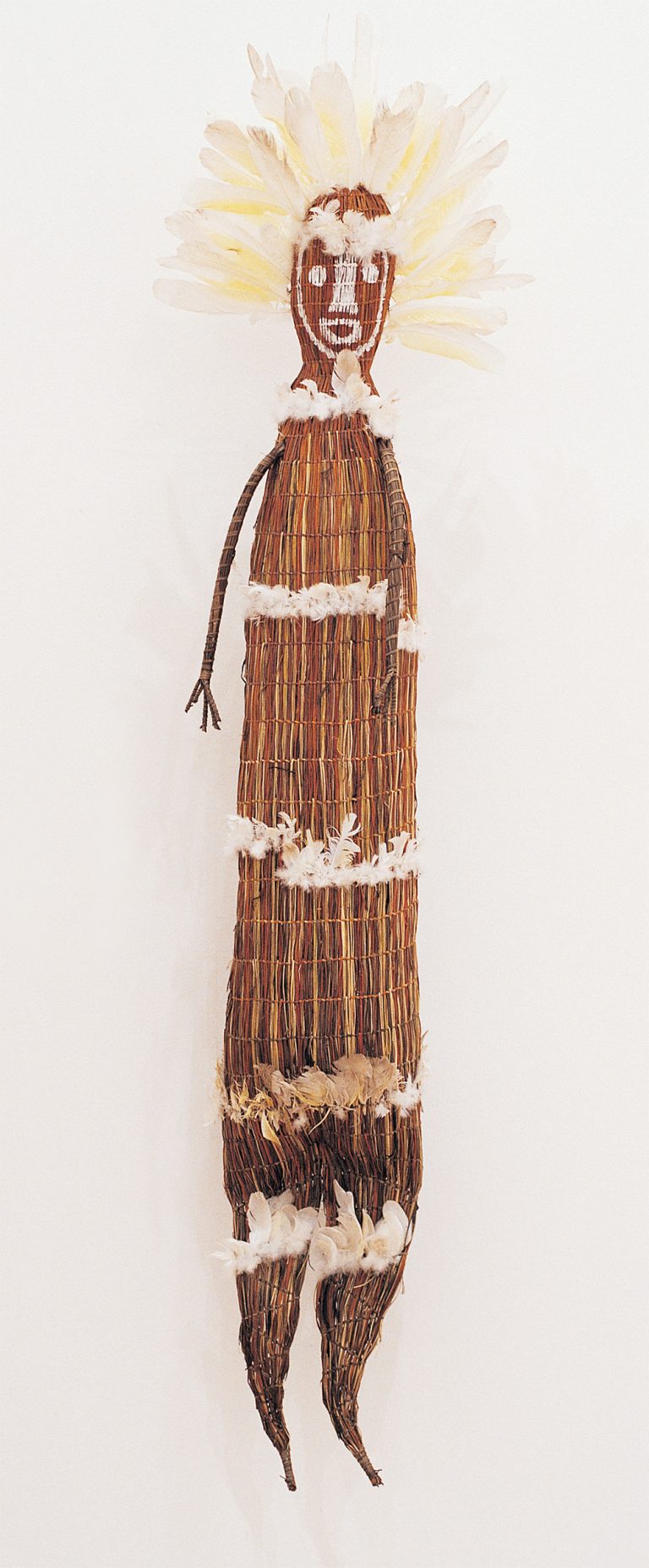We acknowledge the Traditional Owners of the land on which the Queensland Art Gallery | Gallery of Modern Art stands and recognise the creative contribution First Australians make to the art and culture of this country.

Lena Yarinkura / Kune/Rembarrnga people / Australia b.1961 / Yawkyawk (Female water spirit) 2004 / Twined pandanus palm leaf (Pandanus spiralis), paperbark, natural pigments, natural dyes, feathers and PVC fixative / 216 x 56 x 28.5cm / Purchased 2004. Queensland Art Gallery Foundation / Collection: Queensland Art Gallery | Gallery of Modern Art / © Lena Yarinkura/Licensed by Viscopy, 2013
Lena YarinkuraYawkyawk (Female water spirit) 2004
Not Currently on Display
Yawkyawk (female water spirits) inhabit several sites in freshwater streams and pools, and one of these is in Lena Yarinkura’s mother’s country at Borlkdjam (also spelled Bolkdjam and Bolkjam).
With a fish’s tail, and long hair resembling blooms of green algae, they are very much like the European idea of a mermaid. This representation of a yawkyawk is made of pandanus strands that have been coloured with local bush dyes and bound using a loose, twined technique.
The body is stuffed with paperbark to which pandanus fibre arms are attached. Her face is defined by a circle of red ochre, with features painted in white pipe clay and surrounded by a halo of white feather ‘hair’. Bands of white cockatoo feathers indicate that this is a ‘secret’ water spirit, decorated for ceremonial dance.
Lena Yarinkura is a Kune-Rembarrnga woman and she lives outside Maningrida in central Arnhem Land. Yarinkura learned to make the conventional range of twined basketry from her mother but soon began experimenting with different shapes and stitch combinations. Later, collaborating with her husband Bob Burruwal, Yarinkura began painting on bark, which invigorated her fibre works. By 1994, she was making life-size figures of paperbark bound with string.
Discussion Questions
1. Yarinkura uses predominately natural materials in her practice. What do you think is significant about natural materials for the artist?
2. What does Yarinkura’s depiction of yawkyawk tell you about the life of this water spirit?
Classroom Activities
1. Research mythical figures associated with water. Note down any common characteristics they share. Use those elements to invent your own figure and write a short story that describes a day in its life.
2. Consider the assemblage techniques required to make a collaborative class display of figurative sculptures that symbolise ‘water spirits’, using wire, found objects or recycled materials.